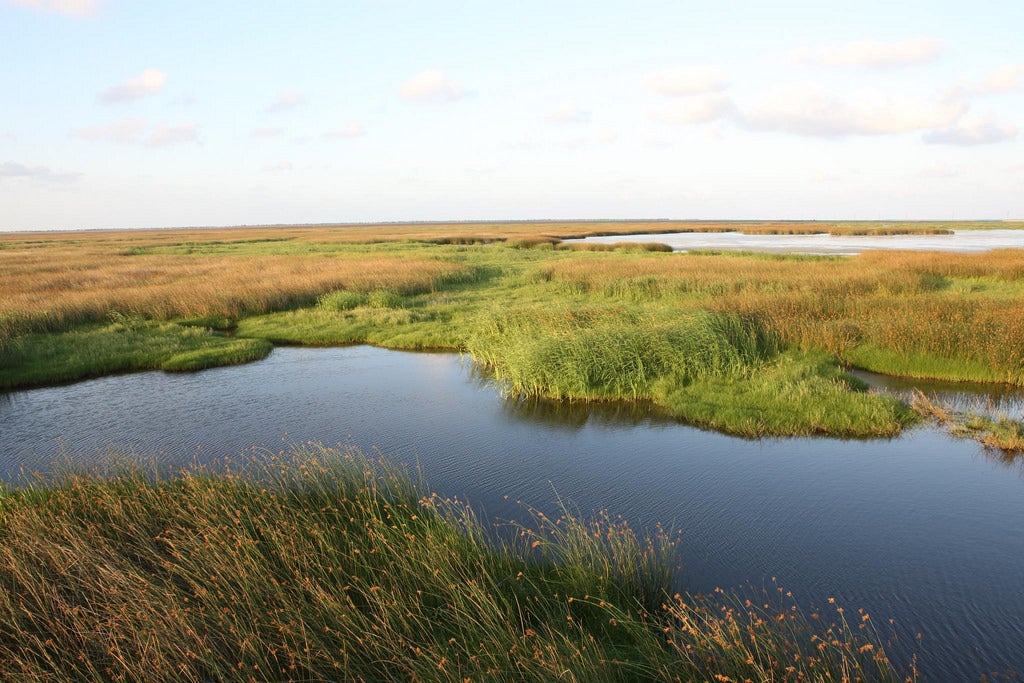Louisiana is in the midst of a catastrophic land loss crisis. The state has already lost over 2,000 square miles of land, and it could lose as much as 4,000 square miles more if nothing is done to restore the coast.
As these wetlands disappear into the Gulf of Mexico, so do the natural protections that shield New Orleans and other coastal communities from rising sea levels and increasingly violent storms.
It’s a dilemma that’s playing out in coastal communities across the United States and around the world.
So it came as welcome news when state and federal regulators this month agreed to shave nearly two years off the five-year permitting process for a diversion project that will allow the mighty Mississippi River to do its natural business of building much-needed land.
It’s an acknowledgment that we’ve no time to lose in preparing for the unavoidable impacts of climate change.
The backstory
Much of Louisiana’s historic land loss came from poor management of the landscape over time, including leveeing of the Mississippi River for navigation and flood protection – which severed the tie between the river’s life-giving sediments and surrounding wetlands. Today, the strongest force driving coastal land loss is sea level rise fueled by climate change.
Without bold, large-scale restoration, Louisiana’s coast will continue to disappear, putting people, wildlife, industries, and billions of dollars in economic infrastructure at risk.
One of the few natural assets at a scale that can match this threat is the Mississippi River. Its land-building power is at the heart of large-scale coastal restoration efforts, particularly sediment diversions, which will reconnect the muddy Mississippi with nearby basins to sustainably rebuild protective marshes and wetlands.
Reestablishing natural processes is core to Louisiana’s Coastal Master Plan – the state’s 50-year, $50-billion climate adaptation strategy. Anything that can be done to speed up efforts to put the river to work building land, consistent with coastal restoration and protection goals, is great news.
That’s what federal and state officials did by agreeing to accelerate the first of those planned diversions, known as the Mid-Barataria sediment diversion. The project will slowly build land in an area experiencing some of the most rapid erosion and will help nourish wetlands being built by pumping sediment through a pipeline from the river to restoration locations.
Getting projects on the ground sooner
Expediting projects like this don’t happen overnight. They take considerable work and coordination among numerous federal and state agencies – which should be commended for their work.
Many large, complex environmental projects involve numerous federal and state agencies, multiple and regular meetings among lead and cooperating agencies, and sometimes more than one funding stream. Improving coordination and transparency is crucial to advancing these projects from engineering and design to implementation. So is navigating a complex set of rules.
In a changing climate, it’s vital that federal agencies be nimble and adaptable. Applying decades-old policies that require status quo-like outcomes in a dynamic environment won’t cut it. To meet the ongoing demands and increasing effects of climate change, we must be able to adapt, react, and improve course where necessary.
Wins like this give me hope for the future.
Because it produces efficiency without undercutting environmental protections, the collaboration that is helping expedite Louisiana’s first sediment diversion should serve as a model for regulatory improvements on a host of environmental projects moving forward.
When we work together, across agencies and party lines, we can do great things for people and the environment.
[Tweet “When we work together, across agencies and party lines, we can do great things for people and the environment.”]










